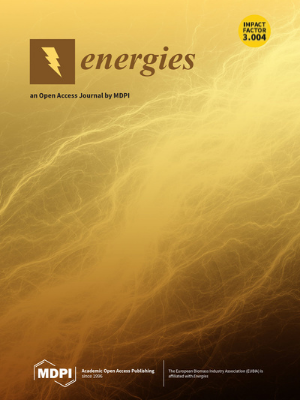弗吉尼亚扇贝生物质作为能源的质量取决于繁殖材料的类型和种植年限
IF 3.2
4区 工程技术
Q3 ENERGY & FUELS
引用次数: 0
摘要
植物生物质仍然是利用可再生资源生产能源的主要原材料。弗吉尼亚扇贝可以作为从森林和木材工业中获得的固体生物质的替代和补充来源。在这方面,重要的是要评估作为固体生物燃料的西达生物质在长期使用该物种种植园的过程中,其质量特性的变化情况。在建立种植园时使用了三种繁殖材料:种子、扦插根(根茎)和幼苗,播种/种植密度为两种。对连续 14 年收获的生物质进行了质量检测,包括水分含量、灰分含量、高热值(HHV)、低热值(LHV)以及碳、氢、硫和氮的含量。结果发现,热物理性质和元素组成主要由植被年限决定。在这方面,植物发育的幼苗期起着重要作用。植被生长 1 年后获得的生物质含有较多的灰分、氮和硫,而碳和氢较少,这降低了其能量值。这些结果证实了获得低水分生物质的可能性,从能量的角度来看,这对生物质是有利的。本文章由计算机程序翻译,如有差异,请以英文原文为准。
The Quality of Virginia Fanpetals Biomass as an Energy Source, Depending on the Type of Propagating Material and Plantation Age
Plant biomass is still the main raw material in the production of energy from renewable sources. Virginia fanpetals may be an alternative and complementary source of solid biomass to that obtained from forests and the wood industry. In this respect, it is important to assess the variability of the qualitative characteristics of Sida biomass as a solid biofuel over a long period of use of a plantation of this species. Three types of propagating material were used to establish the plantation: seeds, root cuttings (rhizomes), and seedlings, at two sowing/planting densities. The quality of the biomass, obtained during 14 consecutive years of harvest, was tested, including the moisture content, ash content, higher heating value (HHV), lower heating value (LHV), and the carbon, hydrogen, sulfur, and nitrogen content. It was found that both thermophysical properties and elemental composition were mostly determined by the years of vegetation. An important role in this respect was played by the juvenile period of the plants’ development. The biomass obtained after 1 year of vegetation contained a larger concentration of ash, nitrogen, and sulfur and less carbon and hydrogen, which reduced its energy value. The results confirm the possibility of obtaining biomass with low moisture, which favorably places it from an energy point of view.
求助全文
通过发布文献求助,成功后即可免费获取论文全文。
去求助
来源期刊

Energies
ENERGY & FUELS-
CiteScore
6.20
自引率
21.90%
发文量
8045
审稿时长
1.9 months
期刊介绍:
Energies (ISSN 1996-1073) is an open access journal of related scientific research, technology development and policy and management studies. It publishes reviews, regular research papers, and communications. Our aim is to encourage scientists to publish their experimental and theoretical results in as much detail as possible. There is no restriction on the length of the papers. The full experimental details must be provided so that the results can be reproduced.
 求助内容:
求助内容: 应助结果提醒方式:
应助结果提醒方式:


